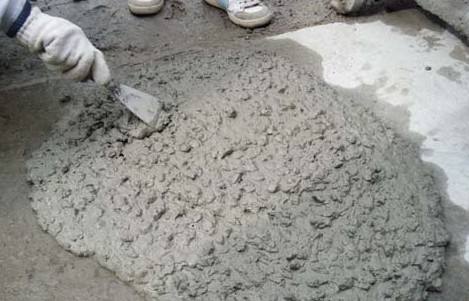(单词翻译:单击)
听力文本
This is Scientific American — 60-Second Science. I'm Christopher Intagliata.
There's a stretch of highway in Pennsylvania, along U.S. 422. "And like every probably 20 feet you see a big pothole or cracking at the joint. Like everywhere. It was so bad." Yaghoob Farnam is a construction materials engineer at Drexel University in Philly. And this road is pretty much his worst nightmare. "Yeah and just imagine I was driving like 60 miles per hour, I could see, I could feel it, I was driving, I was so mad, like, 'what is going on with this?'"
The culprit, he says, may be calcium chloride road salt, used to de-ice highways in the winter. Because calcium chloride reacts with a compound in concrete called calcium hydroxide to form another compound called calcium oxychloride. "It's a huge molecule that causes a lot of pressure inside concrete. And starts degradation of concrete."

The solution? Novel blends of concrete that use cheap leftover materials from the coal and steel industries: fly ash, silica fume and slag. In his latest work, Farnam and his team created plugs of these experimental concretes, and submerged them in salty solutions—along with plugs of conventional concrete. Then they eavesdropped on any cracking with high-sensitivity acoustic sensors. And they tracked heat flow through the material, to monitor chemical reactions.
The results: concrete slugs made with ingredients like fly ash and slag held up remarkably well after more than a month. Whereas normal concrete was cracked to pieces in just a week. Their recipes are in the journal Cement and Concrete Composites.
Farnam says some states have actually started using this sort of concrete—because it's already known to make the material more durable against other factors, like corrosion of internal steel reinforcement. As for those cracks on U.S. 422, and elsewhere? Farnam has another project in the works—to apply a bacterial slurry, which forms limestone when it interacts with salt, plugging up the gaps. But he says that work is still a ways...down the road.
Thanks for listening for Scientific American — 60-Second Science Science. I'm Christopher Intagliata.
参考译文
这里是科学美国人——60秒科学。我是克里斯托弗·因塔利亚塔。
在宾夕法尼亚州,美国422号高速公路有一个路段。“几乎每隔20英尺,你就会看到一个大坑或是接缝裂痕。而且到处都是。这真是太糟糕了。”雅各布·法南姆是费城德雷塞尔大学的建筑材料工程师。可以说这条路是他最可怕的噩梦。“想象一下,我以时速60英里的速度在这个路段上行驶,我能看到、感觉到这些凹坑,我在开车的时候会非常生气,我会想‘这条路是怎么回事?'”
法南姆表示,造成这种状况的罪魁祸首可能是冬季用来为高速公路除冰的氯化钙路盐。因为氯化钙路盐会和混凝土中的氢氧化钙化合物发生反应,形成另一种叫做氢氯化钙的化合物。“氢氯化钙是一种巨大的分子,会在混凝土内部形成很多压力,使混凝土劣化。”
有解决方法吗?使用粉煤灰、硅粉和矿渣等来自钢铁工业的廉价剩余材料制造新的混凝土。在最新研究中,法南姆和团队创造出了实验性的混凝土塞,并将其与传统混凝土塞一起浸入盐溶液中。然后,他们用高灵敏度声传感器监听断裂声。然后对通过这一材料的热流进行追踪,以监测化学反应。
结果表明:成分为粉煤灰和矿渣的混凝土塞在一个多月以后依旧保持完好。而普通混凝土则在一周内就裂成碎片了。他们的实验方法发表在《水泥与混凝土复合材料》期刊上。
法南姆表示,其实一些州已经开始使用这种混凝土了,因为人们已经知道,在对抗钢筋内部腐蚀等问题时,这种混凝土能使材料更耐用。至于美国422号公路和其他地方的裂痕,应该怎么办?法南姆正在进行另一个项目,用细菌泥浆封堵裂口,这种泥浆和盐相互作用会形成石灰岩。但是他说,这项计划仍有很长的路要走。
谢谢大家收听科学美国人——60秒科学。我是克里斯托弗·因塔利亚塔。
译文为可可英语翻译,未经授权请勿转载!
重点讲解
重点讲解:
1. eavesdrop on 偷听;窃听;
例句:It is not polite to eavesdrop on the conversation of other people.
偷听他人说话是很不礼貌的。
2. hold up 维持;保持良好;
例句:Children's wear is one area that is holding up well in the recession.
童装是经济衰退中仍然保持良好发展的一个领域。
3. as for 至于…;
例句:As for his job — well, he was very mysterious about it.
至于他的工作,他总是显得非常神秘,从不多说。
4. interact with 相互作用;相互影响;
例句:Atoms within the fluid interact with the minerals that form the grains.
液体中的原子与形成颗粒的矿物质相互作用。


